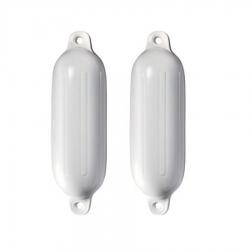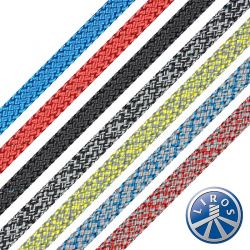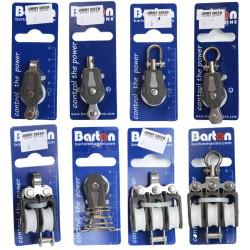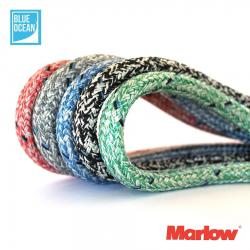Best Practice for Attaching Halyards to Sails
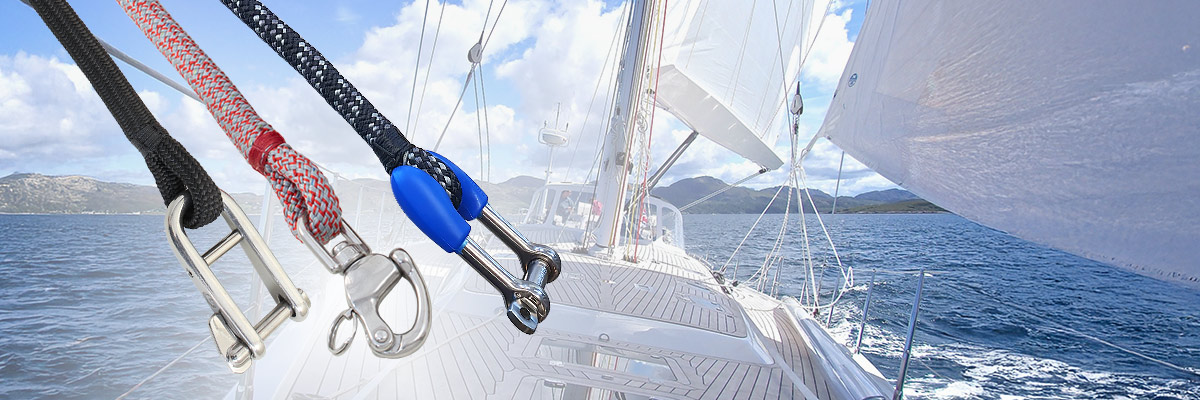
Correctly attaching your halyards is crucial for safe and efficient sail handling. A secure connection ensures reliable hoists and prevents costly equipment failure or sail damage aloft. Each sail type presents unique requirements based on load, movement and material. Below are the best attachment methods for:
- Headsails (Jib, Genoa, Staysail)
- Lightweight Downwind Sails (Spinnaker, Gennaker, Cruising Chute, Parasail)
- Mainsails
1. Attaching a Halyard to a Headsail (Jib, Genoa, Staysail)
Headsails are often subjected to high loads, especially when sailing upwind. The halyard must allow for high luff tension and secure retention at the head of the sail. The attachment needs to be compact, strong and robust.
Preferred Attachment Method:
Spliced Eye to Snap Shackle or Headboard Shackle:
- A side-opening snap shackle professionally spliced to the halyard is the industry standard.
- Ensure the snap shackle is side-opening, not top-opening. Side-opening models are designed for halyard use and reduce the risk of accidental release under tension or side load.

Swivel vs Fixed Snap Shackles:
- Fixed snap shackles are often preferred for reefing headsail furlers because luff alignment is controlled by the extrusion and halyard swivel.
- Swivel snap shackles allow any halyard twist to dissipate before reaching the headsail. They also provide additional freedom for the head of the sail to twist under load, which is advantageous for 'hanked-on' and non-reefing headsails.

Alternative Options:
- Soft Shackles are a good choice for sails with webbing loops or lightweight hardware. They’re kind to sails and lightweight, though care must be taken to ensure they’re properly secured and suitable for the load.
- A dogbone spliced to the end of a tapered Dyneema core line provides a lightweight option for racing boats using hanked-on jibs.
Best Practice Tips:
- Avoid tying knots like bowlines at the head — they are bulky, reduce strength, and can create uneven load paths.
- Choose a low-stretch rope with a full-hoist marker point for repeatable sail trim.
2. Attaching a Halyard to a Lightweight Downwind Sail (Spinnaker, Gennaker, Cruising Chute, Parasail)
Lightweight sails require smooth hoists and rapid deployment. Attachments must be both secure and gentle to avoid sail damage. The head of the sail must be free to respond to the varying power within the sail.
Preferred Attachment Method:
Spliced Eye to Swivel Snap Shackle:
- Swivel snap shackles provide excellent articulation for the head of free-flying sails. They are available with or without quick-release functionality to optimise deck work and hoist/drop efficiency. Quick release can be via a lanyard or a fid.

Alternative Options:
- A Dyneema soft shackle is also ideal for attaching halyards to webbing loops sewn into the head of spinnakers and cruising chutes. Soft shackles reduce wear, avoid hard-point chafing and are easy to handle under pressure.
- Dog bones can be used as an alternative soft attachment. Care must be taken not to hoist the head directly into the mast fitting, as this can cause chafing and reduce articulation.
Best Practice Tips:
- Mark the halyard with a reference point (e.g. whipping or coloured thread) for consistent hoist height.
- Store halyard tails coiled to prevent twists or overrides during rapid sets.
3. Attaching a Halyard to a Mainsail
Mainsails often have dedicated headboard hardware, and the halyard typically runs over a masthead sheave. The connection must be compact to allow the sail to be hoisted to maximum height. A reliable and secure connection is essential. There is little requirement for quick-release functionality due to the typically prolonged installation.
Preferred Attachment Method:
Spliced Eye to Halyard Shackle or Toggle:
- The gold standard for mainsails is a low-profile eye splice attached to a heavy-duty halyard shackle. There are simple options and versions with built-in thimbles for increased chafe protection. If the sail uses a Tylaska or Wichard-style headboard fitting, match the shackle type carefully to avoid binding.

Alternative Options:
- On race boats or lightweight setups, a soft shackle can be used, but check the clearance at the sheave and mast slot — bulk can be an issue. Alternatively, use a dogbone to maximise hoist height.
Best Practice Tips:
- Avoid tying knots like bowlines at the headboard — they can jam and are prone to uneven loading.
- For ultimate chafe protection, opt for a spliced Dyneema chafe tip. This eye splice provides protection at the masthead, where the halyard works hardest when fully hoisted.
Final Recommendations
- Avoid knots wherever possible for halyard attachment — they create bulk, can work loose under vibration, and weaken the rope.
- Professional eye splices offer the cleanest, strongest and most reliable connections. Read the Why Splice? article.
- Soft shackles are excellent across all sail types, particularly where weight-saving and reduced chafe are priorities.
- Whipping is non-negotiable — every halyard end should be securely whipped to prevent fraying and maintain integrity over time. The inclusion of a mousing loop will also ensure that line replacement is snag-free. Read the Why Whip? article.
Jimmy Green Marine offers our flagship Online Custom Build Splicing and Rigging Service tailored to your halyard type and application, including eye splices, soft shackles, and tapering. Browse our full Halyard range online or contact us if you need assistance with your selection.









